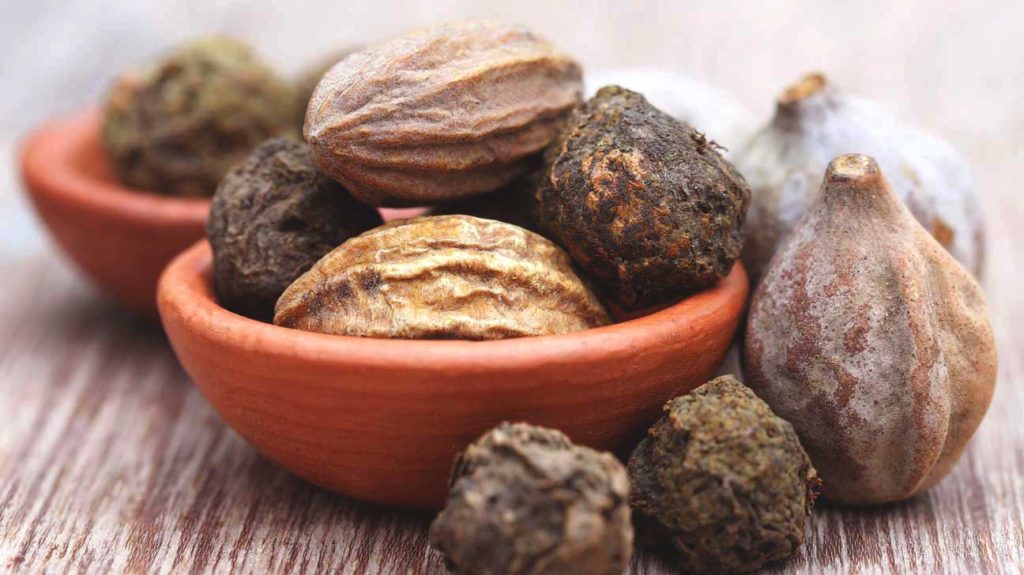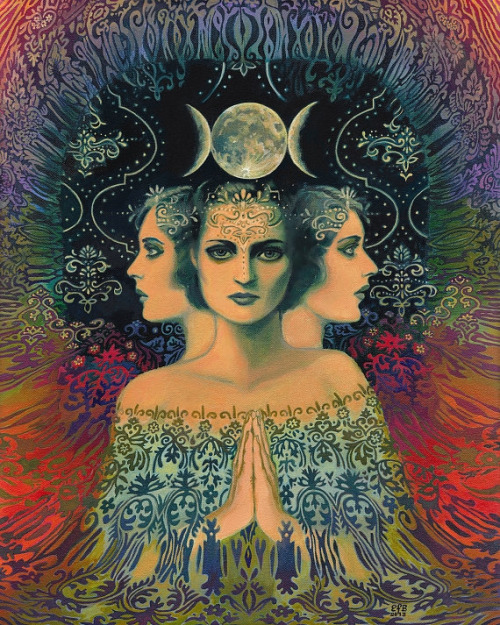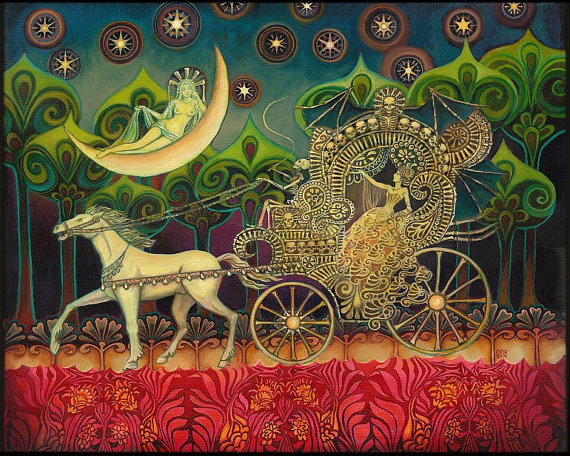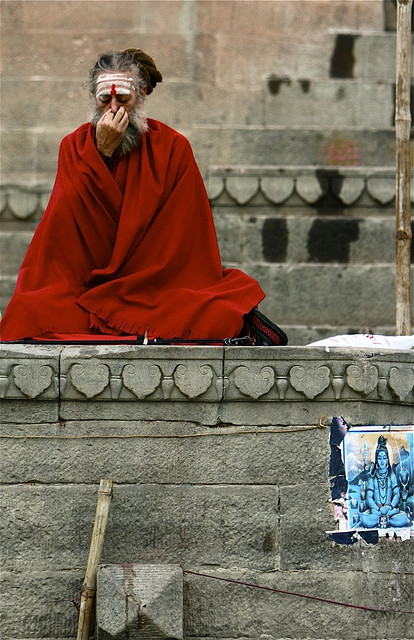Pitta Balancing Diet
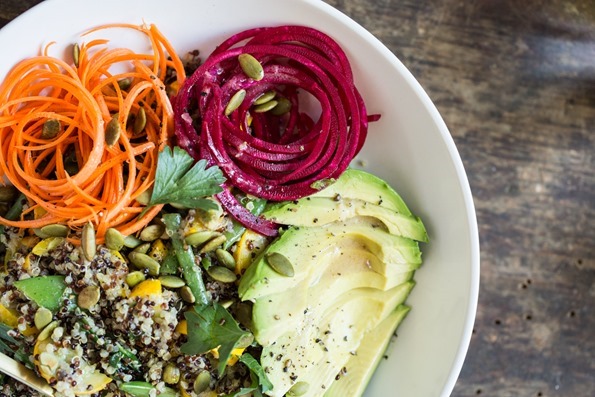
✦ Pitta Balancing Diet ✦
THE BEST FOODS FOR:
Pitta Season = Summer
Pitta Dosha
Teekshna Agni = Sharp Digestive Fire
Vata Balancing Diet
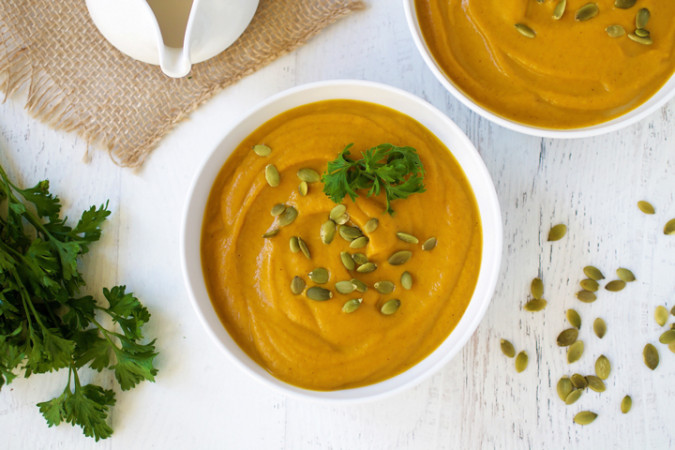
✫ Vata Balancing Diet ✫
THE BEST FOODS FOR:
.
Vata Season – Autumn + Winter
Vishama Agni = Irregular Digestive Fire
.
Triphala – An Amazing Herbal Formula
TRIPHALA – An Amazing Herbal Formula
Triphala is amazing. It’s the most popular, widely known and used Ayurvedic herbal formula. And for many good reasons.
Triphala, and herbal combination of three dried fruits, is balancing and suitable for everyone. Considered “tri-doshic” or recommended to support all three doshas, triphala is one of the very few herbs that can be taken by nearly anyone for an extended period of time without negative side effects or harmful results. Overtime, it brings purification, nourishment and longevity.
The three fruits: amalaki, bibhitahki, and haritaki, each specifically impact the doshic energies in a unique way.
- Amalaki works with pitta. It’s one of the strongest rejuvenate medicines available. It particularly supports the blood, bones, liver and heart. It cleanses the mouth, strengthens the teeth, nourishes the bones and causes hair and nails to grow. It helps to cleanse excess pitta – heat, bile, acidity, and inflammation from the GI tract to improve digestive ability, reduce heartburn, loose stools, or sharp hunger. It’s also a rich source of antioxidants and the most potent source of vitamin C from any natural food or herb.
- Bibhitaki pairs with kapha, reducing excess accumulations in the lungs, throat and sinuses and removes build-up or stones from the urinary, digestive and respiratory tract. It also expels parasites, tones the stomach and increases appetite. It helps to rejuvenate the plasma, muscles, and bones.
- Haritaki is incredibly beneficial to vata, working mainly on the colon and reducing gas, bloating, constipation, and abdominal pain. It also nourishes the nervous system and sensory organs and brings the energy of pure awareness, wisdom and intelligence.
One of the special effects, or prahabhva of Triphala is that it helps to cleanse, detoxify, and remove excess from the tissues while also nourishing, toning and rejuvenating!
Triphala helps to loosen, flush, and escort ama (or bodily toxins, film and plaque) from the cells in the body back towards the main channel of elimination. It supports better digestion and especially a healthy bowel movement. After waste is cleared out, Triphala works to restore, tone, nourish and revitalize the tissues. It creates more ojas, known in Ayurveda as the nectar of consciousness, a soft radiant moony glow and strong immunity.
Celebrated by many for thousands of years, this incredible herbal formula is known to have hundreds of preparations and different uses. Below are a few specific ways you can work with the incredible healing powers to support clarity, strength and resilience within your body and mind.
Detox and Elimination
Triphala is most widely known as a tonic to support regular elimination and cleanse the digestive tract. It’s not actually a laxative, which makes it non-addictive, but rather it helps to tone the muscles of the GI tract and increases peristalsis. Meanwhile it has a detoxifying action.
To use – start with ¼ teaspoon dried triphala powder added to ~4oz hot water. Steep for ten minutes then drink. Take 30 minutes before bedtime, and at least 2 hours after the last meal. Slowly increase dosage if desired.
The taste is quite potent, which can take some getting used to. Tasting the herb is an important part in using the medicine – it allows the body to gain vital information about what it’s ingesting and how it will be used or impacted.
Rasa is the Sanskrit word for taste, flavor, emotion, mood, and the first tissue similar to lymph. So being, there’s a layered and complex relationship to the flavor of foods, medicine, and how it impacts the body mind. Rasa as the first tissue that absorbs the essence of the medicine carries each of the six tastes and has an influence on the emotions as well.
Triphala is unique in that it contains five of the six tastes (all but salty.) Each time you take triphala you’ll most likely notice a different taste highlighted – which is a signal that that particular taste is deficient in your rasa and should be increased. If, however, you begin to taste triphala as sweet, it’s best to stop using the medicine.
If the taste is too much to handle, try taking one sip with just water and herbs, then add honey or milk to soften the flavor.
Eye Health
Triphala is a great cleanser and tonic for the eyes – promoting improved vision. It can cleanse or reduce redness in the eyes, excess secretions, and act as a rejuvenative. This is great for tired, strained eyes, lots of screen time, or during allergy season.
To use – add ½ teaspoon triphala powder to one cup boiling water. Steep ten minutes or allow to cool. Carefully strain several times to remove ALL herbs from the water, using a fine mesh strainer and cheesecloth. Make sure there are no particles left in the infusion that could irritate the eyes.
Standing over the sink, tilt your head to the side and pour the tea into the eyes. Or, splash the infusion into your eyes using the palm of your hand.
Mouth, Gums and Throat
Triphala helps with sensitive, red, inflamed, irritated or bleeding gums and helps to cleanse the mouth from plaque and toxins. As a gargle, it will help with a hoarse voice or congestion in the throat.
Add ½ teaspoon herb to one cup boiling water. Allow to cool, strain, and use the tea as a mouth rinse and gargle for ~ 1 minute or more. Spit into sink when finished.
Strong, Clean, Shiny Hair
Just as triphala helps to cleanse, tone and detoxify the inner body organs, it can help you have clean, fresh, shiny, strong hair.
To make a clarify hair wash: add 4 tablespoons triphala powder to one-quart water and boil for 10 minutes. Allow water to cool to a comfortable temperature. Then, in your bathtub, or leaning over a sink– slowly pour the infusion into hair. Take pauses to massage into your scalp. Leave on for 30 minutes if possible, then rinse with clean water and use your favorite moisturizer.
Vibrant Skin
Triphala can be used to support healthy, radiant skin in a few ways.
For irritated, oily, or broken-out skin, make a simple tea of 1 tablespoon triphala powder in a cup of boiling water. Allow to cool, then pour or splash over troubled skin to help gently clean, soothe, and pull out excess oil and inflammation.
For dull or discolored skin, create a paste with equal parts triphala powder and water. Massage paste over skin, and allow to absorb for 5 – 10 minutes, then rinse and moisturize. Can be done as part of a weekly invigoration treatment.
As the saying goes, “No need to worry, so long as you have triphala.”
For personalized help with any health issues and herbal recommendations, please schedule an Ayurveda Consultation.
Click Here for more info.
New Moon
NEW MOON, DARK MOON
“The Dreamer”
Winter Season, Vata Dosha
Menstruation
The new moon phase represents the quiet, dark stillness of winter. It is a time of deep rest and nourishment. Similar to a winter hibernation, the yin energy of the new moon is our invitation and request to practice being rather than doing. This is an essential part of life – to pulsate in opposition from the modern day society mode of accomplishing goals and striving forward, and instead surrender into a soft experience of non-doing.
In the place of non-doing, we turn our attention inward. We relax and open into our quiet, mysterious nature. From rest, reflection, silence and openness, we have greater access to our innate sense of knowing, of our bodies strong wisdom, and our intuition. During menstruation, the hormones released cause the left and right hemispheres of the brain to merge. We live in a waking meditation. This meditative state supports our openness and connection with the soul, and realms beyond the physical. We are in a better connection and communion with our higher self, ancestors, spirit guides, angelic beings, animal totems, goddess / god, and the divine. The veil between the human personality and the soul is the thinnest.
When menstruating, the portal where spirit becomes matter (the uterus) is opened and flowing. This special time of the cycle creates a heightened sensitivity and great vulnerability. It is also a time of incredible power.
In ancient times, as many Native cultures still practice and as we are collectively remembering, the period of the dark moon and menstruation was a holy ceremony. The open portal and easy, natural state of spirituality was honored in the space of a moon lodge. The dark moon and the moon lodge are quiet, sacred containers to support the important processes at this time in the lunar cycle.
In the space of darkness, all that is ready to be released and die can come forward and move out. Unfulfilled needs and longings are brought up and out. Anything that does not match our current or raising frequency is pulled to the surface and cleared away. This process can be uncomfortable, yet is and essential part of personal growth.
The dark moon, like winter, honors death as a very vital part of life. When we slow down, stop, rest in being and hold time in a dark place, we support and can even enhance the new moon time and all the beauty and power it brings. We align with the greater energies of nature.
With surrender death and release, we create emptiness. In the emptiness (as often symbolized by the chalice) we have room for something new to emerge.
Letting go of what’s done or no longer serving allows us to plant seeds for what can become!
At the new moon we are prime to set intentions for the coming cycle – in this lunar phase or in the next 6 months. We can take this opportunity to clarify and refine what we need or desire, to state that intention, and send the wish into the quantum field of the universe to be manifest.
As a whole, this portion of the lunar cycle is a time for aloneness, rest, relaxation, release, meditation, moon-time rituals and connection to spirit. It is a time to honor the art of being, and pulse away from doing.
Ayurvedic Lifestyle practices for New Moon Phase ➤
Waxing Moon
WAXING MOON
“Moon Maiden”
Spring Season, Kapha to Pitta Dosha
pre-ovulation
The waxing moon is the lunar cycle from new into full. It is a movement out of the internal, into the external world.
Waxing moon is post menstruation, pre-ovulation for those who bleed. The lining of the uterus has just been shed, and all that along with emotions, things unmanifest, and anything we released with the dark moon. We are starting fresh and renewed, just like a bright spring day.
Physically, the body is more light and energized. We are less associated with our physical or emotional sides, and most in a mental, analytical, intellectual space. We feel light, free, inspired and joyful. We are at our optimal time for planning, organizing, and thinking things through. It’s a time of being extra motivated, enthusiastic, determined, goal-oriented, independent and mentally clear.
This is a great time to map out your upcoming cycle. You can leverage this present energy to plan out what will suit you best during each phase of the coming cycles. This can support your alignment with each of the four phases, and support you with what you need at that time.
It’s also ideal to schedule your business meetings now, doing more mentally focused work, cleaning, organizing, and taking part in more social activities.
This waxing moon can be considered the standard phase society operates at. It can be easy to continue to operate from a waxing phase, but ignoring, pushing away or denying the beauty and power of the other phases does harm and diminishes the potential of our full spectrum.
Thus, it’s important to recognize the qualities of this phase and have greater awareness to your tendencies to stay “stuck” in waxing moon mode. When you notice you don’t naturally flow into the full, waning, and new energies, you can make a conscious effort to adopt a more feminine lifestyle and change with the ‘season’.
Ayurvedic Lifestyle practices for Waxing phase ➤
Full Moon
Full Moon
“Lover’s Moon” / “Mother Moon”
Summer Season, Pitta Dosha
Yang – Externally Focused
Ovulation
“Full moons she light. They reveal. They exaggerate. They can bring closure. They keep us up at night. Tire us out during the day. Excite our senses. Have us feeling full. Satiated. Overwhelmed. Alive. Wild. Coming apart at the seams.” — Chani Nicholas
{ ART: The Star Goddess of Hope by Emily Balivet }
Waning Moon
WANING MOON ~
“Wild Woman Enchantress”
Autumn Season, Pitta to Vata Dosha
Pre-menstruation
The waning moon happens as the full moon descends into the new moon. Just as her energies are shifting from bright to dark, we shift our energy and attention from the external world into our internal world.
We move into a mysterious, mystical, witchy and magical space. When our focus is less on what is outside, and instead on what lays within, our intuitive and psychic abilities are naturally more available.
In this distinct shift from outer to inner awareness, emotions become stronger and more active. We may feel more dramatic and even destructive. It’s important to make time and space to be with the emotions, allowing them to be felt and moved through. Emotion = energy in motion.
Emotions are a powerful spiritual tool to guide us deeper into our divinity. When we slow down from our ‘regular life stuff’ and honor the slower pace of the waning moon, we are able to utilize this more vulnerable and raw place.
It’s also important to be with the rising emotions to feel and release what needs to be let go of, in prevention from carrying it into the next cycle. It is a cleansing and a clearing. The stronger emotions can also be a way for us to see what is or isn’t in alignment with our higher beliefs and deeper desires. At this time, we need to be with the emotions and the messages they bring to see what needs to change in the future for our needs and desires to be met.
As we descend into the darkening moon, we dive into the darker and deeper aspects of ourselves. This is a beautiful time to step away from the mode of productivity and more into creativity, rest, and reflection. We are meant to withdraw from intellectual and physical activities and instead practice nourishment and self inquiry.
During this last quarter phase, be careful and selective with how you schedule your time. Don’t over-do it, and leave plenty of space for personal, quiet, creative and restful time.
Naturally, we may also be inclined to clean and clear-out our home. Just as the uterus is preparing for the shedding of its lining, we are inspired to shed the physical things in our surroundings. Cleaning, letting go and clearing out extra stuff in the home has a supporting impact on the energetic and emotional releases that are happening, too.
It’s also really nice to clean, clear, freshen and beautify your home temple before drawing inwards even deeper during the approaching dark moon phase.
Ayurvedic Life Style Practices for Waning Phase ➤
Ayurvedic Guide for Summer
Summertime is Pitta Time
Summer is such an amazing time of year. We get beautiful, long, warm sunny days to be outside and play. Farmers markets overflowing with fresh produce. Dancing at outdoor concerts. Weddings, BBQs, reunions. Gardens going off. Swimming. Camping. Hammock napping. Supporting your local lemonade stand… So many wonderful things!
When left unchecked, or while living with with unconscious and unbalancing lifestyle practices, the intensity of summer can increase your pitta really quickly, leading to a variety of problems.
Symptoms of a pitta imbalance include:
Mind + Emotions
- feeling burnt out or depleted
- stressed out
- workaholic
- impatient, irritable, easily annoyed
- anger or hot temper
- judgmental or critical of self or others
- sharp mind and opinions – always “right”
- super competitive
- perfectionism
- overpowering, controlling or manipulative
- cynical, aloof, always wanting to be alone
Body
- sensitivity to heat
- sensitivity to bug bites (“mosquitoes love me”)
- rashes, boils, hives, eczema, and burns on the skin
- inflammation
- hemorrhages, bleeding gums, bloodshot eyes
- dizziness, lightheadedness, blood sugar instability
- fatigue and insomnia
- sharp headaches or migraines
- profuse sweating, sweaty palms, sour smell, intense body odor
Digestion
- loose stools or diarrhea
- sensitive to spicy foods
- hyper acidity, acid indigestion, or heartburn
- ulceration
- loss of appetite
All of these symptoms of high pitta can be easily aggravated during the summer season, especially when daily rituals and lifestyle practices are out of alignment. They can be present any time of year for someone with a pitta imbalance. But they’re more common for everyone during the pitta season (summer.)
Top Tips for a Balanced Summer ➣
Cleanse
Cultivate clear channels to create spaciousness. Space is cold, and the clarity allows for the cool flow of energy. More spaciousness within your body and mind will create a cooling effect and help you tolerate more heat.
Clogged channels equals heat, inflammation and irritability.
- Have lunch as your main meal of the day and eat an early, light dinner. This supports your body to digest and clear things out while you sleep, rather than digest a late heavy meal. Your liver and organs detoxification is strongest while you sleep from 10pm – midnight. Super important to cleanse and cool the blood which impacts your whole system.
- Poop first thing in the morning (w/o caffeine). You can drink a large glass of water with lemon or lime to help encourage peristalsis and flush your channels.
- Make sure you don’t have any ama (undigested food, toxins or plaque). If you do, a light cleanse or detox to clear things out will help your body and mind stay cool.
Cool
Take out things that increase heat and add in things that have a cooling effect.
Adopt an Ayurvedic Diet:
- Enjoy the bounty of summer foods, and avoid anything that’s too stimulating, heating, or creates inflammation.
- Focus on sweet, bitter and astringent foods: sweet juicy fruits – watermelon, peaches, berries. summer veggies – summer squashes, sweet peas, snap peas, green beans, whole grains, legumes, coconut, cilantro, fennel, mint, cucumbers
- Chlorophyll is your best friend! It cools the blood and creates energy. Add in all the greens you can! Feast on green smoothies, fresh raw green juice, salads and soups to flush out the heat, oil and acidity.
- Keep the diet plain, fresh, simple, and light.
- Reduce: pungent, salty, sour: spicy foods, salsa, kimchi, ginger, hot sauce, cacao, alcohol, coffee, fermented foods, pickles, kombucha. Fried food, greasy food, processed stuff, or snack foods.
- Take out inflammatory stuff: processed sugar, seed oils, fried foods, wheat, gluten, alcohol, dairy. Alcohol in particular will set your blood on fire.
- Let go of coffee and cacao. Both create a lot of heat in the blood.
Self-Care:
- Play with the power of cooling and soothing essential oils – rose, sandalwood, lavender, peppermint, spearmint, eucalyptus. You can diffuse them, wear them, make a compress on a cold wet washcloth, or spritz with a spray bottle.
- Try cold water therapy – cold plunges, cold showers, soak feet in cold water, swim in fresh water.
- Walk over wet grass barefoot ~ this lovely little practice pulls the heat down and out, and grounds you into the healing effects of the earth.
Soften
- Practice living in an easeful way. Daily practices such as meditation and self massage are important. Along with orienting your attitude and perspective of the world or daily occurrences in your life towards the best outcome. Not as a spiritual bypass. But as a way to be proactive towards the positive.
- With intention, regularly soften and relax into your day, regardless of what is arising.
- Wear soft colors and fabrics – white, light blue, etc. cotton, hemp, silk and linen.
- Don’t overwork and make plenty of time for play! Fun, adventures, activities.. Anything that brings you joy.
- Cultivate connection, and play nice. The sharp edge of a brilliant, sharp mind or overly competitive nature isn’t super fun for others. Relax. Listen, flow, let go.
- Soften open your heart with compassion. For yourself and others.
Lifestyle Design
- Rhythmic eating – Have three complete meals at the same time each day. Enjoy a nourishing, satisfying lunch and an earlier, lighter dinner
- RELAX, unwind, and have an easeful evening. Quit work early. Turn off bright lights and glowing screens.
- Go to sleep early, aiming for around 10pm
- Focus on getting things done in the morning and early afternoon.
- Create a daily meditation practice. Softening into your heart and body is better than sharp mental awareness.
- Exercise: morning is best. Opt for something cooling – swimming, walks, hike to a vista. Avoid exercising mid day when sun is strongest, or late evening when it’s time to soften and unwind.
- Your best yoga practices are: slow and steady, with lots of seated and twisting postures. Move with the breath and dropped into your body (not up in your head).
- Exercise to avoid: overly competitive sports, hot yoga, mid-day exercise
- Avoid the intense mid-day sun
- Enjoy an afternoon nap or short siesta if you’re tired or need a refresh.
- Protect your skin from the strong summer sun with light clothes and sunscreen, a hat, and seeking shade.
Ayurvedic Practices
- During your daily meditation, you can add in Nadi Shodhana pranayama (alternate nostril breathing.)
- Practice daily self massage with coconut oil and rose or lavender essential oil.
- Moon Bathe, star gaze, make moon water
- Healing skin mask – green clay, sandal wood, turmeric, rose petals, manjistha, and neem. Mix equal parts, add water to make a wet paste. Apply to face, let dry and rinse off with cool water.
Herbs
best teas: chrysanthemum, hibiscus, nettle, chamomile, mint
blood and liver purifying: dandelion, burdock, barley, manjistha
digestives: cumin, coriander, fennel, cardamom
restorative, nourishing: shatavari
brain and nervine, good for stress: gotu kola
cleansing and cooling: aloe, amalaki, triphala
If you’d like to learn more about the doshas, gunas (qualities), how they change through the the day, lunar phase, seasons and life cycles. And how to change your lifestyle to keep things in balance – check out my mini course Ayurveda 101: The Foundations. Click here for the deets.
To your health and happiness xoxo Anna
Five Simple Steps to Start a Meditation Practice

There are so many ways to meditate. The word “meditation” itself has a wide variety of meanings and interpretations. In the broader sense, we can make anything in life a meditative practice when we bring our present moment awareness to it.
Making daily life a meditation is beautiful and powerful, but I also think it’s really important to develop a formal sitting meditation where your attention is drawn inward. When you have a consistent practice in this way (sitting in silence) you are building your ‘muscle’ or skill set to bring your presence, or point of attention, or conscious awareness, into other areas of your life. You’re enhancing your skill to create more mindfulness.
By sitting in silence, you’re becoming more familiar with witnessing your thoughts and mental activity as an experience you’re having, not actually a part of who you are. As you start to create space between where you witness the thoughts arriving from (your awareness) and the actual thoughts, you begin to disengage from the stream of mental activity. The more often you practice this, the more spaciousness and peace you can experience.
Please have patience, kindness and compassion for yourself through your practice. It’s important to not always expect certain results, and feel defeated or give up if they aren’t met. IE: finding absolute peace and serenity as soon as you start meditating.
Rather, think of it as a practice that will slowly build your ability to experience peace, calm, or a reduction of stress over time. Just like becoming more physically fit, it takes time. If you’re not able to go for a 1 mile jog, you wouldn’t expect yourself to run a marathon by the end of the week.
What IS important is to put your focus on consistency. Having a short meditation (two to five minutes) that you feel capable of repeating each day is more important than a longer practice that’s sporadic or sparse.
As you continue to practice, your ability to soften into the present moment and witness things as they are improves. This can bring a spacious presence into everything that you do. This supports the expansion of your consciousness and the true qualities of your nature: peace, joy, contentment and equanimity.
Five Simple Steps To Create A Meditation Practice:
1. Find a quiet place to sit. Ideally, find somewhere you can go back to everyday, where you won’t be disturbed. In your bedroom, at the foot of your bed, in your yoga space, in a guest bedroom, or wherever you can create a peaceful sanctuary is a nice place. Avoid any habitual spots where you watch t.v., read, or sit for regular day-to-day activities. In these places your mind may go into its automatic thought mode.
2. Find a regular time. If you can fit your meditation into your everyday routine and regular schedule you are more likely to stick to it and it will become a regular part of your day. For example, in the morning after you get up and brush your teeth, on your lunch break, in the evening before dinner or at sunset, or as part of your night routine are all great times to regularly practice. Regular consistency everyday, even if for a short time span, can be more beneficial than long and erratic meditation sessions.
3. Find a comfortable sitting position. Relax into your body, with your spine straight and aligned. You can sit on a cushion or stack of pillows on the floor, with your sit bones near the edge of the pillows to allow your hips to tilt forward and your legs to rest comfortably. Sitting in a chair works fine too. It is best to sit at the edge of the chair to avoid leaning back too far on the back rest. Place your feet flat on the floor and rest your hands on your knees or thighs.
4. Relax. Take a few deep, long, and slow breaths. Focus on your breath for as long as you like- a couple of breath cycles, a couple of minutes, or longer. Honor what you need in the moment.
5. Bring your awareness to the center of your being. Feel into the presence and spaciousness of your inner self. Rest in this space. Allow thoughts to come and go and just pass through like clouds in the sky. Do not give them any extra attention nor be discouraged that they appear. Simply allow them to be, and refocus your attention back into the space of your being. Rest in the awareness and peacefulness of your center.
You can use a timer to help hold your ‘space.’ If your practice is new, inconsistent, or you have a lot of resistance, keep it short! Two to five minutes is plenty. Once the habit becomes automated and you do it everyday for at least a couple of weeks, you can expand the time to something longer. But aim for short, sweet, and consistent first.
Apps such as Calm or Insight timer can be very helpful too.
If you’d like to get more tips, insight or support, join in the private facebook forum {click here} and connect with a beautiful community of women focused on their health and wellness.
Namaste xo Anna

